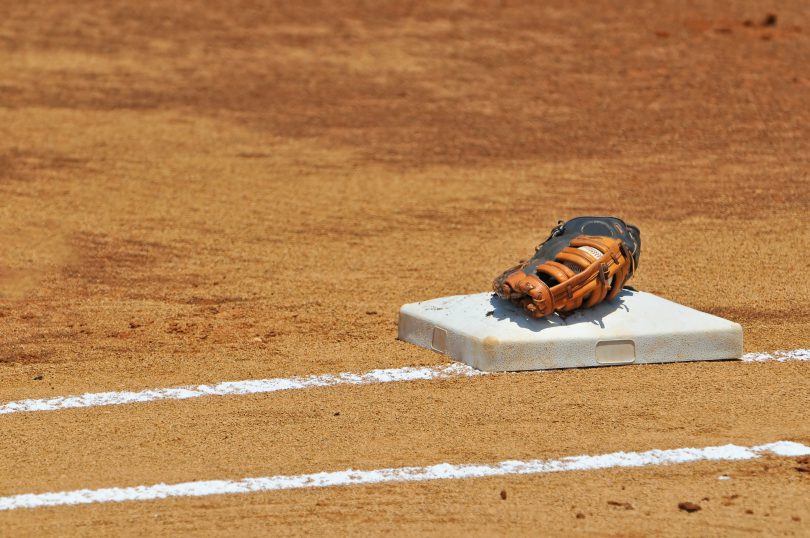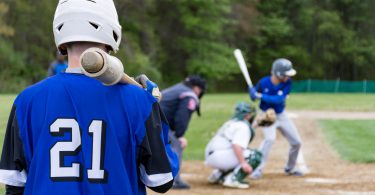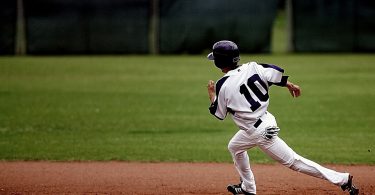The Situation:
There is no one on and 1 out in the third inning of a 0-0 game. The game has lacked offense and is moving along quickly. A right-handed pitcher has been using his sinker effectively to get ground balls all day. He has a 1-1 count against the right-handed batter.
The Play:
Knowing the importance of a strike in the 1-1 count, the catcher drops down a boxed sinker. This is a common pitch for the pitcher, who throws the sinker to the middle of the zone and lets his movement take the ball to the edges without trying to be too fine. He nods to the sign and starts his delivery.
On this pitch, his sinker starts up in the zone and breaks hard horizontally on the hitter’s hands. The hitter, seeing the ball up and over the plate starts his swing before realizing that he will be handcuffed. He draws his hands in with a defensive swing and is jammed badly. The ball chops towards the second baseman as the hitter tries to pick up his thumbs and make his way to first. The ground ball has slow pace and brings the second baseman into the baseline between first and second to field the ball, shortening his throw. He gathers the ball with plenty of time and makes the short throw to the tall, right-handed first baseman standing upright at first base. The first baseman strides towards the second baseman as he throws it. Everything appears routine until the ball reaches the first baseman. The ball arrives about belt high and on the glove side, and handcuffs the first baseman.
The Outcome:
The receiving first baseman looks incredibly awkward in his attempt to catch the ball and his glove hand gets tied up. The ball hits the heel of his glove and ricochets off the leather, off the outside of his leg and squibbles into the first base coaching box. The runner makes his last few steps to first base, arriving safely on the error.
What Went Wrong:
Errors like these happen when defenders get lazy and fail to do their job with detail. On this play, there are several things the first baseman should have done differently.
1) Anytime there is a shorter throw, it means the receiving end of that throw will have less time to react to the ball. That means the receiving end should put even more emphasis on lowering themselves into a position to move and adjust to the ball quickly. When the second baseman’s route to the ball shortened the throw considerably, the first baseman should have lowered himself in his crouch (with his lower half) to improve his athleticism and reaction time. When a first baseman stands straight up and is then required to move quickly, they often have to lower their center of gravity (crouch) before moving. By anticipating and getting into a lower, more athletic position to start, you cut-out this step and give yourself more time to react to the throw.
2) In addition to getting in a more athletic receiving stance, first basemen always need to work hard to create a receiving window or lane to the ball where their glove can move freely, without obstruction to unexpected movements or location of the ball. When the first baseman strides too early in this play, not only does it limit his range to reach errant throws, it also eliminates his clear receiving window. Even on an accurate throw, the outstretched leg limits the ability of the glove to adjust, and the result is the first baseman getting handcuffed and making an error on the most routine of plays. Next time, you can bet he will not ‘take a play off’ and will be thinking the game.







